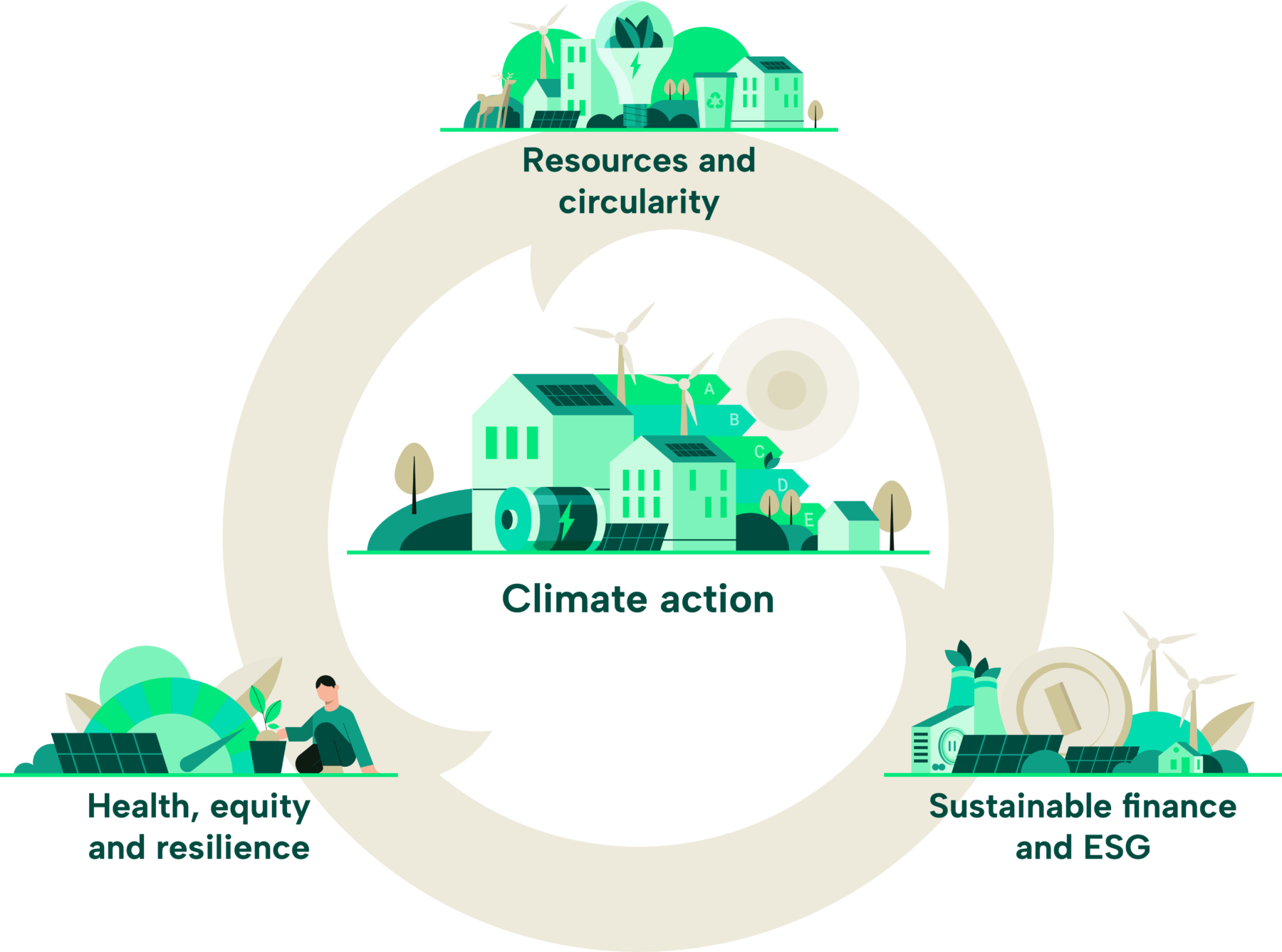Worldwide, buildings are responsible for around 40% of energy and process-related CO2 emissions, 50% of all extracted materials, 33% of water consumption and 35% of generated waste. Other environmental impacts include resource depletion; air, water and land pollution and biodiversity loss.
By 2050, the global population will increase 27% to 9.8 billion, and by 2060 global building floor area is expected to double, catapulting all of the environmental, social and economic impacts associated with the built environment.
With such a significant impact, it is critical that the built environment plays its part in delivering the transformative change needed to decarbonise our global economy. Not only are sustainable built environments a critical solution to climate change, they also help create resilient, thriving communities, and drive economic growth.
Collectively, the World Green Building Council network is transforming the building and construction sector across four impact areas — Climate action, Health, equity and resilience; Resources and circularity, and Sustainable finance and ESG.
Find out more about our strategy, ‘Sustainable Buildings for Everyone, Everywhere’, and Our Mission.
The World Green Building Council is leading the built environment community to drive local action and create the global momentum necessary for people and planet to thrive. Our view of future sustainable built environments is based on four impact areas:

A sustainable built environment protects and enhances people, places and the natural environment, and is critical to reducing greenhouse gas emissions and tackling the climate crisis.
Environmental priorities are balanced alongside socio-economic development, including economic growth, human health and equity. This holistic approach to sustainable development should be applied throughout the entire lifecycle of a building — from material sourcing, to design, construction, operation and end of life.
Our approach to sustainability in the built environment incorporates numerous focus areas to provide a holistic scope that aligns with the targets of the UN’s Sustainable Development Goals.
Any building can be a sustainable building, but not all sustainable buildings are the same. Different countries and regions have distinctive climatic conditions, unique cultures and traditions, diverse building types and ages, or wide-ranging environmental, economic and social priorities. This diversity shapes the variety of approaches to sustainable building.
However, the following principles are consistent standards of best practice in sustainability in the built environment across all geographies:
Accelerating climate action through:
Protect and enhance health, equity and resilience through:
Regenerate resources and advance circularity through:
Through these core principles, WorldGBC advocates for a holistic, systemic approach to sustainability in the built environment, and supports its member Green Building Councils to pursue approaches that are best suited to their own country and markets.